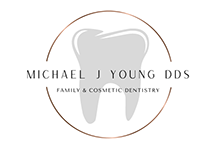 In today’s world of advanced dentistry, there are virtually no dental conditions that cannot be fixed to improve your smile. Dental infections and diseases, moderate to severe tooth blemishes, and even tooth loss are no longer reasons to lock your smile away due to self-consciousness. Some people, however, may not suffer from a serious dental condition, but can still be insecure due to small blemishes that detract from the beauty of their smile. In many cases, those blemishes can be corrected with a minor cosmetic tooth bonding procedure.
In today’s world of advanced dentistry, there are virtually no dental conditions that cannot be fixed to improve your smile. Dental infections and diseases, moderate to severe tooth blemishes, and even tooth loss are no longer reasons to lock your smile away due to self-consciousness. Some people, however, may not suffer from a serious dental condition, but can still be insecure due to small blemishes that detract from the beauty of their smile. In many cases, those blemishes can be corrected with a minor cosmetic tooth bonding procedure.
What is Dental Bonding?
Tooth bonding is a cosmetic dental procedure that involves the application of a bonding liquid to correct small tooth imperfections. The bonding material, called composite resin, is the same durable, tooth-colored material that your dentist uses to fill a cavity. If you have a chipped, cracked, discolored, or slightly misshapen tooth, then we can change the color and shape of your tooth through dental bonding.
How Does it Work?
Minimal preparation is required to perform a dental bonding procedure. Your dentist will first use a shade guide to determine which composite resin color best matches the color of your natural teeth. Then, he will slightly roughen the target area of the tooth, and then apply the bonding liquid. When the liquid sets, your dentist will place the resin and sculpt it into the desired shape to erase the blemish.
Is Bonding Right for Me?
While dental bonding is preferred over other procedures for certain minor cosmetic conditions, it may not be the best option if your tooth suffers from moderate to extensive damage. While composite resin is a durable substance, it is not as strong as your natural tooth enamel and typically lasts 3-5 years before needing repair or replacement.






